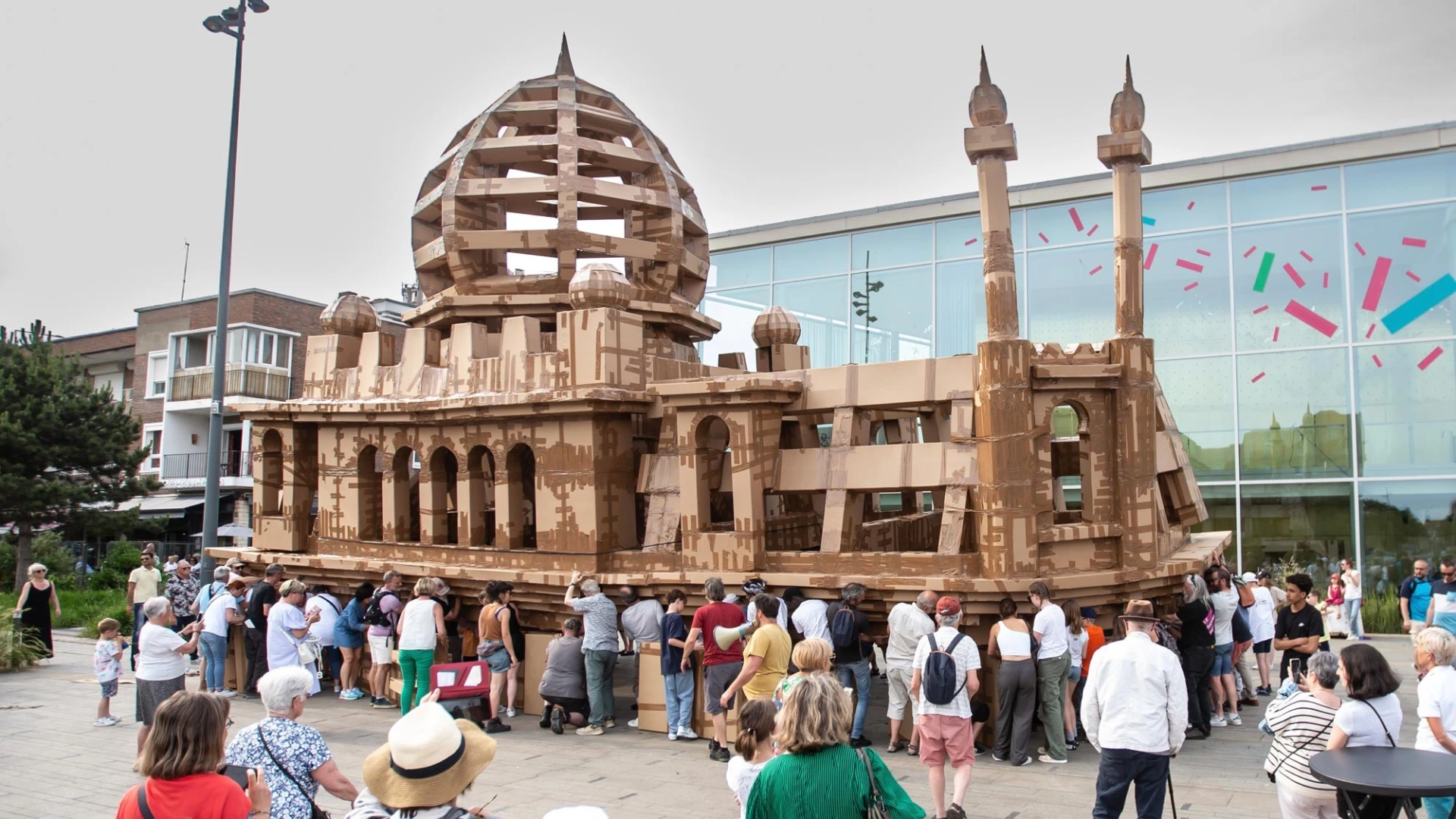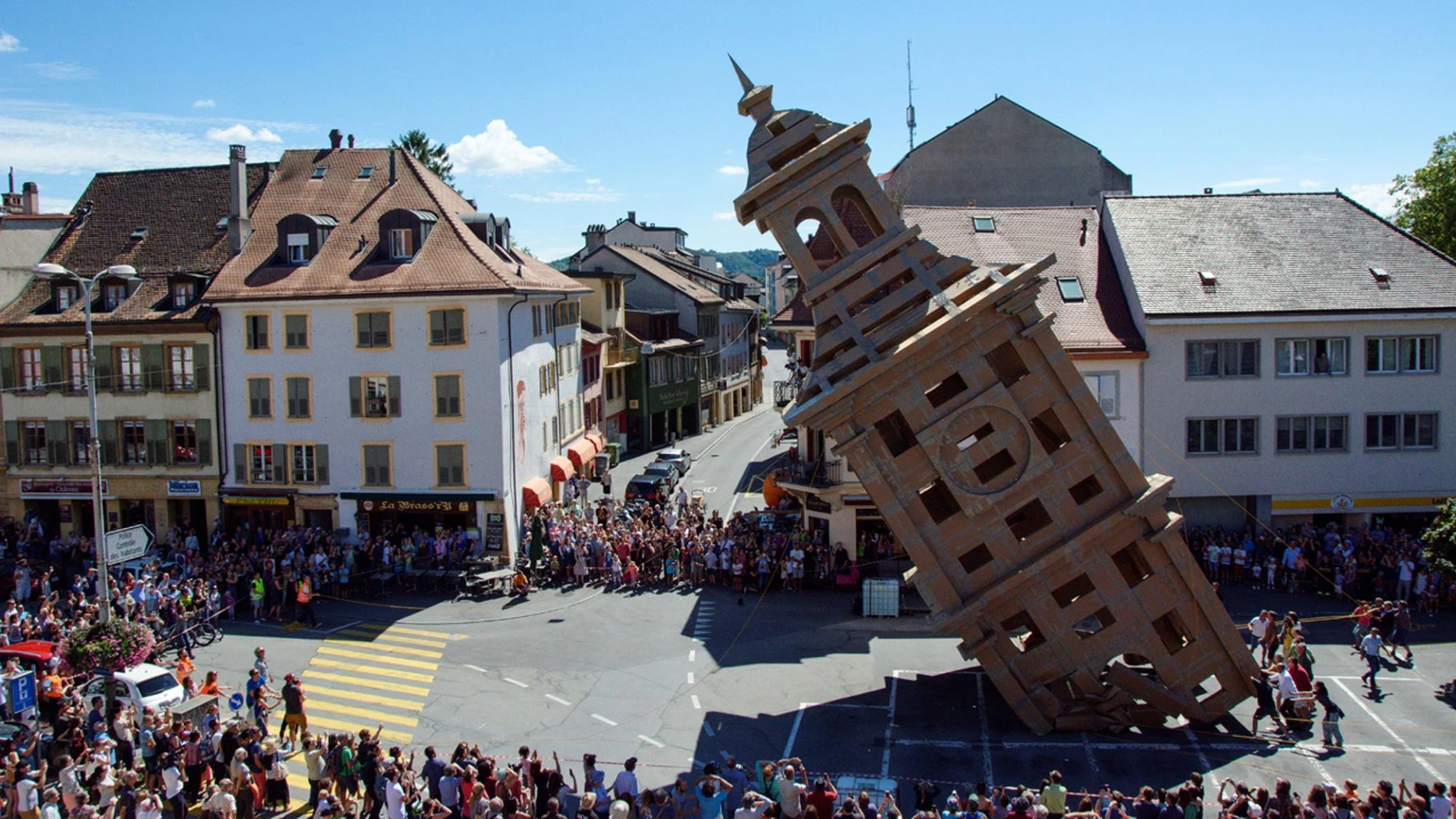Olivier Grossetête Ⓕ
MONUMENTAL CONSTRUCTIONS
⑥ Stubengasse maps
Sa 29.6. 10:00–18:00 (Construction) | 18:00–19:00 (Richtfest)
So 30.6. 17:00–18:00 (Deconstruction)
In the MONUMENTAL CONSTRUCTIONS workshops, the individual parts of the construction are prepared all together: cutting the cardboard, assembling it with tape – the artistic team teaches practical skills. To take part in MONUMENTAL CONSTRUCTIONS, you only need to attend one workshop (Duration: 3 ½ hours). Anyone interested can register at mitmachen@flurstuecke.com
Mon 24.–Fri 28.6.
Worshops in the Hawerkamp Hall
Sat 29.6.
10am–6pm: Construction
All construction enthusiasts help to build the old elephant house – 16 metres high, made from 1 300 boxes! Length of stay: as long as you want and are strong enough. 6pm: The work is done – time to celebrate – with a drink. 6.30pm: The building can be admired from the inside and the outside. The Le SNOB band will round off the festivities.
Sun 30.6.
All day long: the building stands in all its glory and welcomes visitors. 5pm.: Demolition time! Nothing is built to last forever. The elephant house is dismantled again – and becomes a jumping castle for young and old.
A building project that unites people: Festival-goers are invited to come together to build a structure out of cardboard boxes. The elephant house from the old zoo is erected in the middle of the city and encourages reflection on architecture and its history until it is demolished.
Bridges floating on giant helium balloons. Towers climbing up in the middle of the pedestrian area. Triumphal arches reaching over the harbour. These are just a few of the temporary structures created by the artist Olivier Grossetête between Mexico and Australia. What is special about these buildings is that they are made of cardboard and tape. And they are built by the people themselves in the host cities of the MONUMENTAL CONSTRUCTIONS.
In Münster’s Stubengasse, Grossetête and his team will rebuild a unique building: the historic elephant house of the old zoo. Opened in 1899, it was built in the „oriental style“: more precisely, it was modelled on a mosque. Like the rest of the zoo, this area was the scene of racist ethnic displays, where people were presented as ‚exotic‘. Now the elephant house returns as a work of art made of cardboard. A monumental structure that raises questions about architecture and its history and whose very construction process symbolises the opposite of exclusion. Community is celebrated here.


